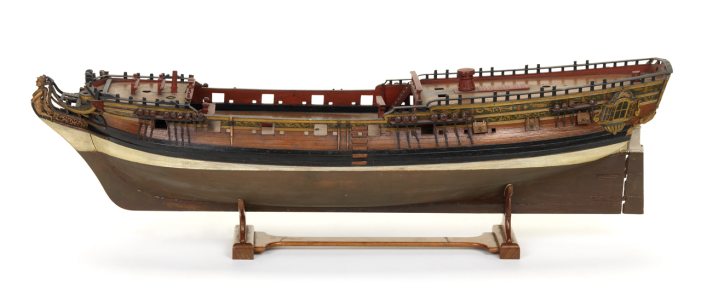Book Review:
17th and 18th Century Ship Models -
from the KRIEGSTEIN COLLECTION
by Arnold and Henry Kriegstein
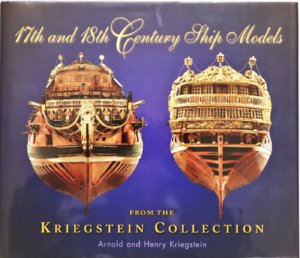
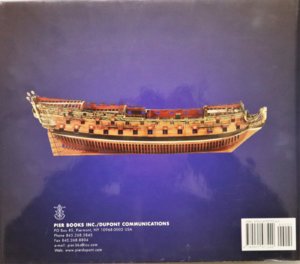
214 pp; Printed in a Limited Edition of 1,000 copies. Landscape format;
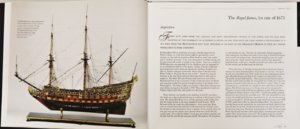
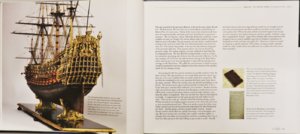
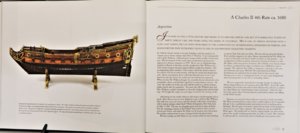
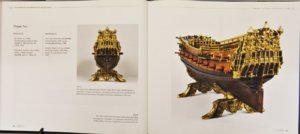
SYNOPSIS:
an extraordinary photographic record with extensive details of the personal collection of 17th and 18th century ship models by the Kriegstein brothers. The 20 vessels shown here are each presented with a series of lavish, exceptionally fine quality, full-color photos in extraordinary details and clarity. The accompanying text gives the details of the model's aquisition, provenance, description, construction and historical perspective. Additional chapters include a Queene Anne figurehead presented in same manner as the ship models; photojournalism in the 17th century and details on care and conservation of models.
Elegant book with about 200 detailed color paintings and photographs of model ships from the 17th and 18th centuries. With commentaries including details of the model's aquisition, provenance, description, construction and history.
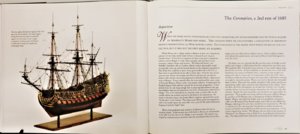
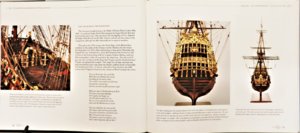
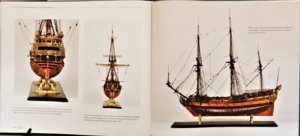
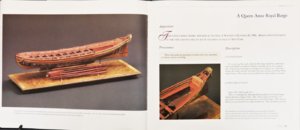
CONTENTS:
Acknowledgements
Foreword
Introduction
1 The Royal James 1st rate of 1671
- Lucifer at the helm: terror tactics in the age of sail
2 A Charles II 4th rate circa 1680
– A "frigate" ahead of its time / Evolution through natural selection
3 The Coronation 2nd rate of 1685
- England's great loss by a storm of wind
4 The Adventure 5th rate of 1691
- The "Glorious Revolution" incites a failed counter-revolution
5 A William & Mary 4th rate circa 1695
- identifying ships at sea
6 A Queen Anne 3rd rate circa 1702
- The line of battle influences ship design
7 A Queen Anne Royal Barge
- An Admiral's barge conveys Sir Cloudsley Shovel from one tragic fate to another
8 The Marlborough 2nd rate of 1706
- Carved and gilded decorations disappear on models and ships
9 The Diamond 4th rate of 1708
- Failure of the Darien Scheme promotes the Union of England and Scotland
10 A Queen Anne 3rd rate circa 1710
- Launching of men-of-war
11 An Admirals Barge circa 1710
- The invasion of England is aided by a ship model collection
12 The Royal Oak 3rd rate of 1713
- Oak leaves conceal a King
13 A Georgian Admiral's Barge
- The elusive craftsmen who converted warships into works of art
14 The Lion 4th rate of 1738
- The Lion and the young pretender
15 A George II 4th rate circa 1745
- The establishment stifles innovation
16 The Namur 3rd rate of 1746
- The Namur and the War of Jenkins' Ear
17 A ship's boat circa 1750
- A feat of navigation such as the world had never seen
18 The Carcass bomb of 1758
- The Carcass bomb launches a hero's career
19 The Aetna bomb of 1776
- Fire and brimstone, wood and canvas
20 The Genereux 3rd rate of 1785
- Modeling a prize
21 A Queen Anne figurehead
- The master carver at work
22 Ship Models in Perspective
- When Men-of-War were Works-of-Art
23 Photojournalism in the 17th Century
- Willem Van de Velde the elder and younger portray the wooden worship
24 Care and Conservation
- Averting the ravages of dust, light, heat, damp, dryness, trauma, and consumption
25 Fakes and Forgeries
- The Good, the Bad, and the Phony
Index
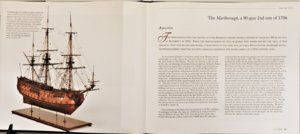
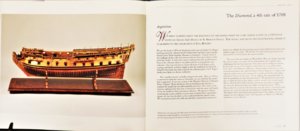
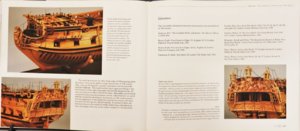
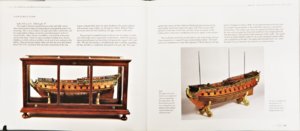
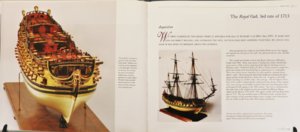
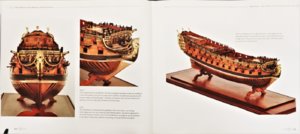
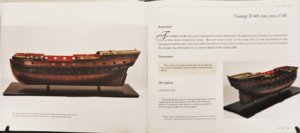
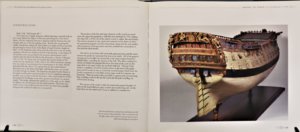
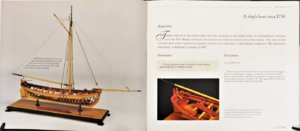
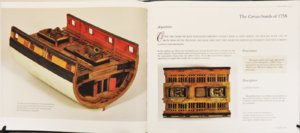
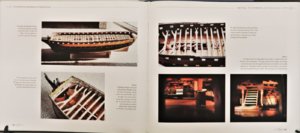
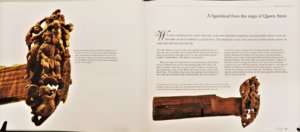
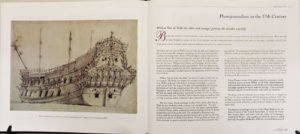
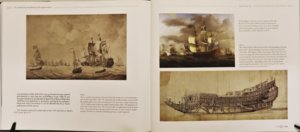
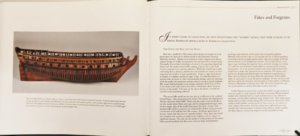
Due to the fact, that it is not available any more in new version, I was longer time looking around for it. It is worth every Euro I paid.
Beautiful models, exceptional good photos and very informative text - If you are interested in this period and in contemporary ship models
- Highly recommended !!
17th and 18th Century Ship Models -
from the KRIEGSTEIN COLLECTION
by Arnold and Henry Kriegstein


- Hardcover
- Verlag: Pier Books and Dupont Communication; Auflage: First American Edition. (2007)
- ISBN-10: 0975577247
- ISBN-13: 978-0975577240
- Verpackungsabmessungen: 30,2 x 25,7 x 1,8 cm
- Produktgewicht inkl. Verpackung: 3,1 pounds
214 pp; Printed in a Limited Edition of 1,000 copies. Landscape format;




SYNOPSIS:
an extraordinary photographic record with extensive details of the personal collection of 17th and 18th century ship models by the Kriegstein brothers. The 20 vessels shown here are each presented with a series of lavish, exceptionally fine quality, full-color photos in extraordinary details and clarity. The accompanying text gives the details of the model's aquisition, provenance, description, construction and historical perspective. Additional chapters include a Queene Anne figurehead presented in same manner as the ship models; photojournalism in the 17th century and details on care and conservation of models.
Elegant book with about 200 detailed color paintings and photographs of model ships from the 17th and 18th centuries. With commentaries including details of the model's aquisition, provenance, description, construction and history.




CONTENTS:
Acknowledgements
Foreword
Introduction
1 The Royal James 1st rate of 1671
- Lucifer at the helm: terror tactics in the age of sail
2 A Charles II 4th rate circa 1680
– A "frigate" ahead of its time / Evolution through natural selection
3 The Coronation 2nd rate of 1685
- England's great loss by a storm of wind
4 The Adventure 5th rate of 1691
- The "Glorious Revolution" incites a failed counter-revolution
5 A William & Mary 4th rate circa 1695
- identifying ships at sea
6 A Queen Anne 3rd rate circa 1702
- The line of battle influences ship design
7 A Queen Anne Royal Barge
- An Admiral's barge conveys Sir Cloudsley Shovel from one tragic fate to another
8 The Marlborough 2nd rate of 1706
- Carved and gilded decorations disappear on models and ships
9 The Diamond 4th rate of 1708
- Failure of the Darien Scheme promotes the Union of England and Scotland
10 A Queen Anne 3rd rate circa 1710
- Launching of men-of-war
11 An Admirals Barge circa 1710
- The invasion of England is aided by a ship model collection
12 The Royal Oak 3rd rate of 1713
- Oak leaves conceal a King
13 A Georgian Admiral's Barge
- The elusive craftsmen who converted warships into works of art
14 The Lion 4th rate of 1738
- The Lion and the young pretender
15 A George II 4th rate circa 1745
- The establishment stifles innovation
16 The Namur 3rd rate of 1746
- The Namur and the War of Jenkins' Ear
17 A ship's boat circa 1750
- A feat of navigation such as the world had never seen
18 The Carcass bomb of 1758
- The Carcass bomb launches a hero's career
19 The Aetna bomb of 1776
- Fire and brimstone, wood and canvas
20 The Genereux 3rd rate of 1785
- Modeling a prize
21 A Queen Anne figurehead
- The master carver at work
22 Ship Models in Perspective
- When Men-of-War were Works-of-Art
23 Photojournalism in the 17th Century
- Willem Van de Velde the elder and younger portray the wooden worship
24 Care and Conservation
- Averting the ravages of dust, light, heat, damp, dryness, trauma, and consumption
25 Fakes and Forgeries
- The Good, the Bad, and the Phony
Index















Due to the fact, that it is not available any more in new version, I was longer time looking around for it. It is worth every Euro I paid.
Beautiful models, exceptional good photos and very informative text - If you are interested in this period and in contemporary ship models
- Highly recommended !!






